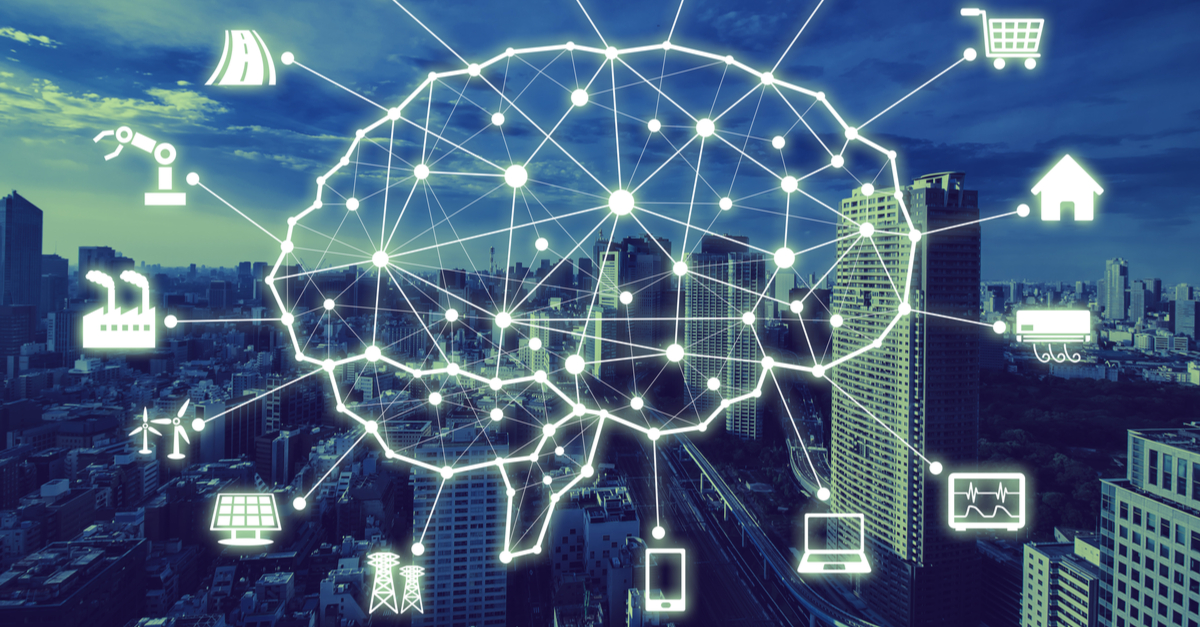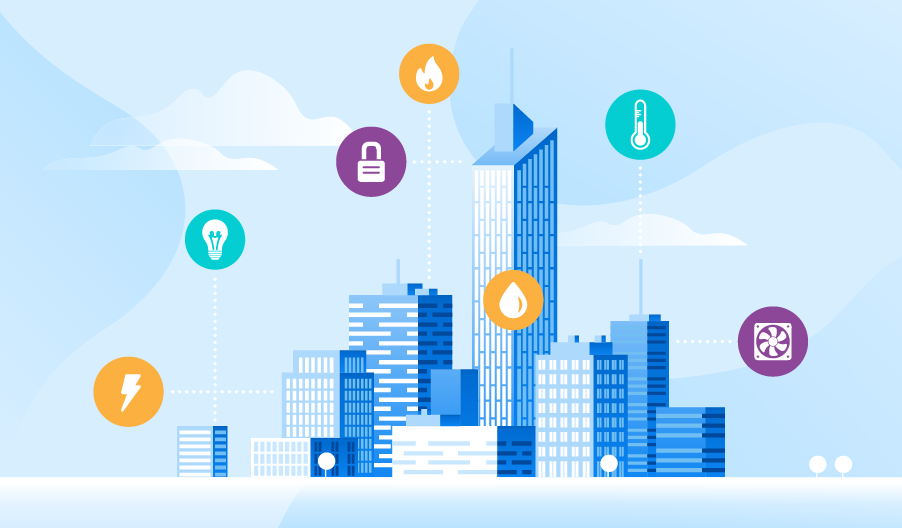Energy Management and sustainability, it’s the era of the intelligent IoT

Energy Management is one of the most effective applications of the IoT: for companies in every sector, objects connected to the internet can be a support for reducing costs and environmental impact because they send reliable and updated information on the consumption of electricity and other sources. Without interrupting the business, it is possible to consume (and pay) less and also to innovate business models for greater competitiveness.
The IoT actively participates in environmental sustainability objectives. The UN Sustainable Development Goals (SDGs) for 2030 and the themes that go under the acronym of ESG (Environment, Social, Governance) are an integral part of corporate strategies that build growth on new values: protecting the planet, caring for the wellbeing and prosperity of people and communities, giving more transparency to the relations with stakeholders.
We stressed these aspects in the recent Talk “Digital transformation and IoT: a pillar for the success of energy sustainability” as part of the I-Week organized by DuneD. We have highlighted that digital transformation is triggered not only when smart objects that send data are installed, but also when the data is analyzed with artificial intelligence techniques. That is why we refer to it as the AIoT, the Artificial Intelligence of Things.
In fact, once it is properly analyzed, data allows to create models of the energy consumption to better calibrate the interventions. AI and Machine Learning (ML) algorithms constantly align action to real needs by learning from experience, adapting flexibly and activating real-time corrections. For this reason, the IoT triggers a real paradigm shift in business, making it proactive and predictive.
How DuneD is helping its customers in Energy Management

DuneD has already implemented AIoT projects for environmental sustainability and proactive and predictive energy management for its customers. We worked with an Italian Facility & Energy Management company to develop predictive algorithms and we used IoT technologies to improve the level of service and management of operations thanks to the connected devices that field workers are equipped with. Based on the AWS “IoT Core” service, we have activated the reception of IoT messages for Energy Management from any predisposed device allowing to: view in the geographical map where the devices are located which ones are switched on correctly and which are in error and require action; monitor the environment in which the device is installed, rreporting temperature levels on a regular basis and obtaining real-time alerts on anomalies (for example, too high a temperature in a hospital) to alert maintenance; measure energy consumption and predictively estimate the energy saving opportunities of an environment; analyze the data collected track the success of the energy efficiency policies and generate continuous improvements.
In another best practice of ours, we developed an ongoing project with a Portuguese textile group in order to identify more energy-efficient materials, processes and machinery. For this client we have used a mathematical formula which consists of a proportion between time, quantity produced and energy used. We then compiled a ranking of materials and machines based on energy efficiency. The ranking is flexible: it can be prepared considering only one source (for example, only the consumption of electricity, gas or water) and, among the variables, time and costs can also be introduced.
Smart buildings: from the 4.0 factory to the sustainable condominium

Energy efficiency allows savings to any type of building, private, public, commercial or industrial.
In an American food company that produces meat the AIoT for energy management has made it possible to measure the performance of the various activities of the factory and correct the most inefficient ones. The data generated by the sensors showed that the refrigeration units were the main energy-consuming area: the refrigerator doors remained open for up to 5 hours a day for loading and unloading. This information made it possible to implement the corrective actions necessary to reduce operating costs.
In another international best practice, an airport in a South American capital has implemented an Energy management project through AIoT to reduce the costs of the air conditioning, heating and ventilation system. The airport operator has also adopted a new lighting system with LEDs and environmental sensors to optimize electricity consumption and reduce the environmental impact. Finally, it applied the granular data collected and analyzed thanks to the AIoT to the maintenance of machinery used at the airport (such as conveyor belts), reducing breakdowns and downtime.
Another use case is that of a condominium in a large European city, where the data obtained from the objects connected to the Energy management system is combined with data from other sources, including weather conditions. This is a Data enrichment operation like the one that DuneD typically conducts for its customers, combining information from corporate databases with those of external sources and interpolating them in the Data Lake.
This information is then analyzed using artificial intelligence algorithms which – in the case of smart buildings – optimize the use of energy in the building in real time. The algorithms change depending on the data they receive thanks to machine learning and this allows the software to make predictions on energy use in the condominium based on past experience, 24 hours in advance. The software is also linked to smart meters and electrical grid. This allows the building to monitor the price and mix of sources from which energy is generated.
Energy management and AIoT: how an Italian utility has become proactive

Managing the load on the electrical grid in a flexible way also helps operators in the electricity market to manage peaks and fluctuations in demand, to incorporate incentives to stimulate consumption awareness and to push dynamic pricing formulas. One of the most advanced best practices in the world is that of an Italian top utility with operations on a global scale. This company is using AIoT to minimize problems along the network: continuous monitoring of the condition of cables and other assets through sensors prevents overloads, avoids waste and enables predictive maintenance.
Using machine learning algorithms, this multinational is able to estimate future energy consumption and improve its demand-based pricing models or predict peak loads and introduce incentives to balance demand and avoid disservices.
Furthermore, AIoT-based energy management allows this utility to maximize results in renewable generation plants – for example, by helping to orient solar panels. Energy monitoring sensors, which send performance and consumption data, also help to understand how to maximize the use of renewable sources in commercial offers.
Finally, the AIoT allows this company to offer municipalities advanced lighting solutions, such as lamps that turn on only when cars and pedestrians pass by.
DuneD and AWS together to reduce your carbon footprint
All companies can proactively tackle the new energy scenario thanks to AIoT-based energy management. Driven by fast Internet connections, cloud computing and increasingly aware energy management, the Energy management sector is on track for solid expansion.
The IoT solutions that DuneD offers are based on the AWS architectures. We are AWS partners and we know that among the several strengths of this solution there is the ability to help companies reduce their environmental impact thanks to the cloud. In 2019, Amazon co-founded The Climate Pledge and, along with over 200 signatories, is committed to achieving net-zero carbon by 2040. By shifting processing loads from on-premises data centers to the cloud, AWS customers can expect to reduce their carbon footprint by as much as 88%. Furthermore, once AWS is powered by 100% renewable energy (a goal that AWS expects to achieve by 2025), they could reduce carbon emissions from an average workload of up to 96%. This is possible thanks to innovations such as cooling systems that reduce energy and water consumption, optimized hardware, scalability and efficient use of computing resources and the aforementioned AIoT for energy management. Amazon is keeping its commitment with the new Customer Carbon Footprint Tool, that was released during the Mobile World Congress 2022. This tool (available to all customers at no cost) helps to achieve sustainability goals by monitoring the carbon footprint of its Cloud infrastructure.
Sustainability is an integral part of being a data-driven company. The data properly collected, mixed, enriched and analyzed enable intelligent decision-making; in other words, it gives you the ability to decide and act proactively and on time with respect to your strategy.
DuneD is willing to accompany its customers on this path too: whether it is the transition to Industry 4.0, supply chain control, asset monitoring or energy efficiency, companies that use intelligent IoT are aware that data-driven efficiency translates into savings that can be invested in growth and innovation. In a crucial moment like the one we are experiencing, in which energy costs are increasing and the visibility of the supply chain is critical, data and analytics are still our most precious ally.
Food for thought…
- “The Carbon Reduction Opportunity of Moving to Amazon Web Services”, the study published by 451 Research that detects the awareness of European companies regarding the opportunities of the AWS cloud to help them reduce their carbon footprint.
- AWS’s Climate Pledge initiative.
Interesting podcasts…
- The Next Tech podcast on industrial IoT and the Internet of Everything.
